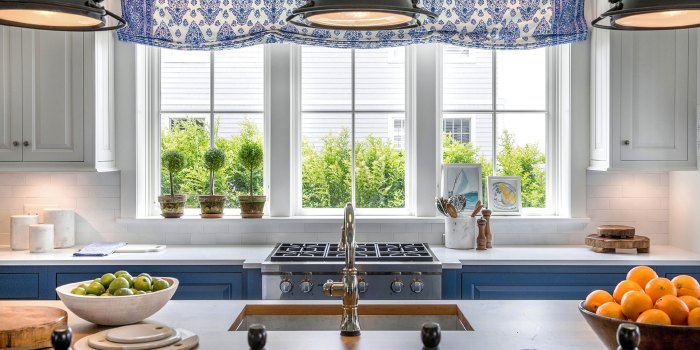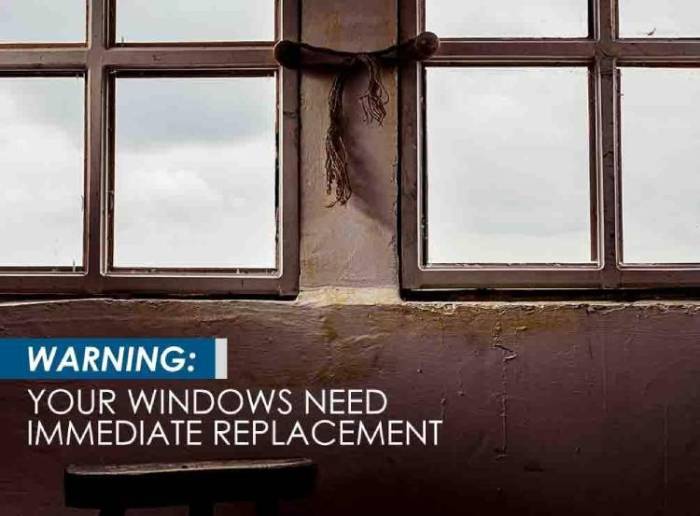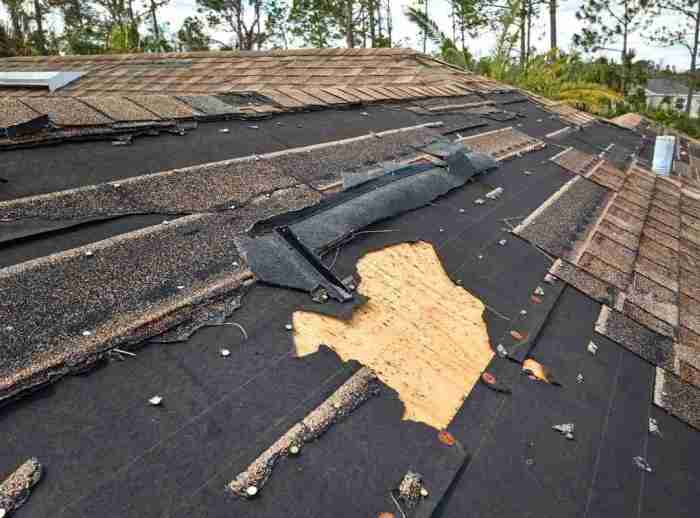10 Common Mistakes to Avoid When Installing New Windows
Exploring the realm of window installation, this piece uncovers the 10 common mistakes that should be avoided at all costs. From improper measurements to inadequate insulation, these pitfalls can make or break the outcome of your window project. Let's dive in and learn how to steer clear of these errors for a successful window installation journey.
When it comes to installing new windows, precision and attention to detail are key factors that can greatly impact the end result. By understanding the dos and don'ts Artikeld in this guide, you can ensure a smooth and flawless installation process for your windows.
Importance of Proper Installation
Proper installation of new windows is crucial for several reasons. It ensures that the windows function correctly, provide adequate insulation, and enhance the overall aesthetics of your home.Improper installation can lead to a variety of issues, including air and water leaks, drafts, and even structural damage to your property.
These consequences can result in higher energy bills due to decreased energy efficiency, as well as potential damage to the interior of your home from water infiltration.
Impact on Energy Efficiency
Improperly installed windows can create gaps and leaks that allow air to seep in and out of your home. This can lead to energy loss as your heating and cooling systems have to work harder to regulate the temperature indoors.
Properly installed windows help maintain a consistent indoor temperature, reducing the strain on your HVAC system and lowering energy costs.
Effect on Aesthetics
In addition to the functional aspects, proper window installation also plays a significant role in enhancing the visual appeal of your home. Well-installed windows contribute to the overall curb appeal and can increase the value of your property. On the other hand, poorly installed windows can detract from the appearance of your home and create an unsightly look that may affect your home's resale value.
Choosing the Right Windows
When installing new windows, choosing the right type is essential to ensure optimal functionality and aesthetics for your space.Factors to consider when selecting the right windows include the material, style, and energy efficiency. Different materials like wood, vinyl, aluminum, or fiberglass offer varying levels of durability, maintenance requirements, and insulation properties.
The style of the window, such as double-hung, casement, or picture windows, can impact the overall look of your home and how you interact with the window.Energy efficiency is another crucial aspect to consider. Look for windows with high-quality insulation and low-E coatings to reduce heat loss and improve the energy efficiency of your home.
Properly insulated windows can help lower energy bills and create a more comfortable indoor environment.Window size and placement also play a significant role in the overall look and functionality of your space. Consider the amount of natural light you want to let in, the views you want to enhance, and the ventilation needs of each room when determining the size and placement of your windows.
Properly sized and strategically placed windows can enhance the aesthetic appeal of your home while maximizing natural light and airflow.
Measurement and Preparation
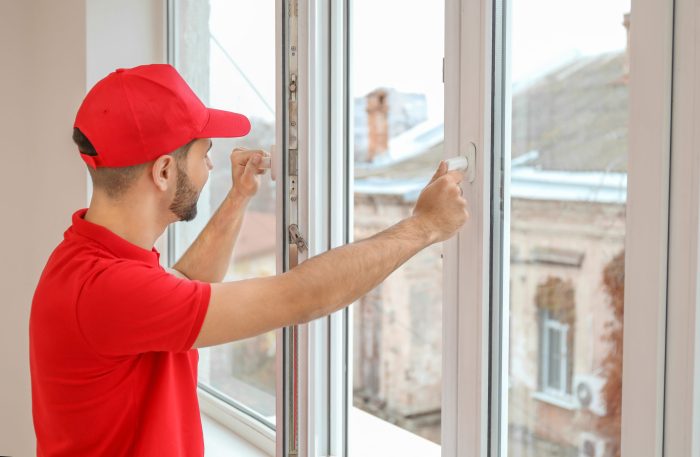
Accurate measurements and proper preparation are crucial steps when installing new windows to ensure a seamless and successful process. Taking the time to measure correctly and prepare adequately can help prevent costly mistakes and ensure the windows fit perfectly.
Importance of Accurate Measurements
- Measure the width and height of the window opening at multiple points to account for any variations. Use a tape measure and record the measurements accurately.
- Consider the window frame thickness and any trim that may affect the fit of the new window. Take precise measurements to avoid gaps or misalignment during installation.
- Double-check all measurements before ordering or purchasing new windows to ensure they are the right size for your space.
Tips for Measuring Windows Correctly
- Measure the width first, then the height, and finally the diagonal to confirm that the opening is square.
- Take measurements from the inside of the window frame for accuracy and consistency.
- Account for any obstructions or obstacles that may impact the installation process, such as window sills, hinges, or handles.
Necessary Preparations Before Installation
- Clean the window opening thoroughly to remove any dirt, debris, or old caulking that may hinder the installation.
- Check the condition of the window frame and repair any damage or rot before installing new windows to ensure a secure and durable fit.
- Prepare all necessary tools and materials in advance, such as shims, screws, caulk, and insulation, to streamline the installation process.
Proper Tools and Materials
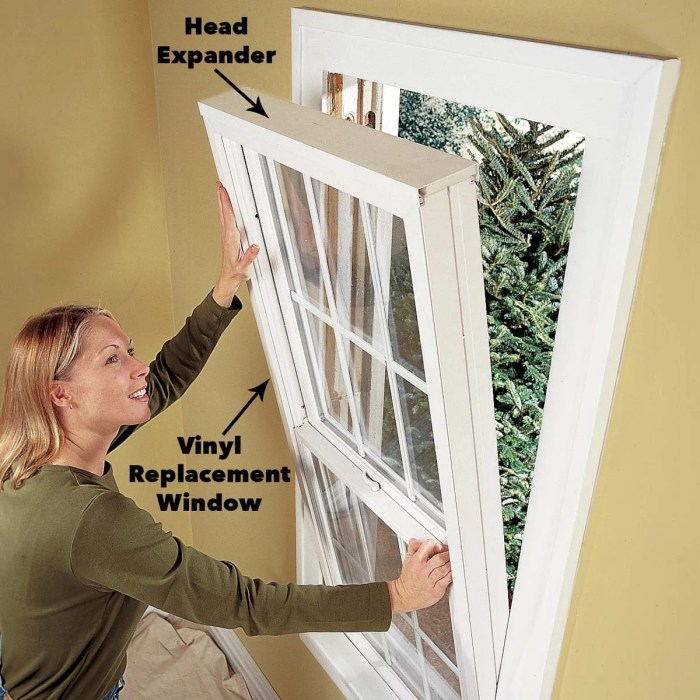
Proper tools and materials are essential for a successful window installation. Using the right equipment ensures accuracy, efficiency, and safety throughout the process.
Essential Tools and Materials
- Caulk gun: Used to apply sealant around the window frame to prevent air and water leaks.
- Tape measure: Helps in accurately measuring the window opening for a perfect fit.
- Screwdriver: Needed to secure the window in place with screws.
- Level: Ensures that the window is installed straight and level for proper operation.
- Hammer: Used to drive nails or screws into place during installation.
- Shims: Help in adjusting the window for a snug fit and proper alignment.
- Safety glasses and gloves: Protect your eyes and hands from potential injuries while handling tools and materials.
Safety Precautions
- Always wear safety glasses and gloves to protect yourself from any accidents or injuries.
- Follow the manufacturer's instructions for each tool to ensure safe and effective use.
- Avoid working alone, especially when handling heavy or large windows, to prevent accidents.
- Keep tools and materials organized and within reach to avoid unnecessary accidents or delays.
- Use a sturdy ladder or platform when working at heights to prevent falls or injuries.
Removing Old Windows
When it comes to installing new windows, one crucial step is removing the old ones safely and effectively. This process requires attention to detail and the right tools to ensure a smooth transition to the new windows.
Step-by-Step Guide for Removing Old Windows
- Start by carefully removing any window coverings, hardware, and trim surrounding the old window.
- Next, use a utility knife to cut through any caulking or sealant holding the window in place.
- Once the sealant is cut, gently pry the window frame away from the wall using a crowbar or hammer.
- Be cautious when handling the glass to avoid injury, and dispose of it properly.
- Finally, clean up any remaining debris and prepare the window opening for the new installation.
Common Challenges During Removal
- Stubborn sealant or caulking may make it difficult to separate the window frame from the wall.
- Old windows can be heavy and awkward to handle, posing a risk of injury if not removed carefully.
- In some cases, the window frame may be damaged during removal, requiring repairs before installing the new windows.
Preparing the Window Frame for New Installation
- Inspect the window opening for any damage or rot that needs to be repaired before installing the new windows.
- Clean the window opening thoroughly to remove any debris or old sealant that could affect the new window's fit.
- Ensure the window opening is properly insulated to prevent drafts and improve energy efficiency.
Ensuring Proper Insulation
Proper insulation around windows is crucial for maintaining energy efficiency in your home. It helps prevent drafts, reduces energy loss, and can even improve indoor comfort levels
Types of Insulation and Benefits
- Foam Insulation: Provides a tight seal and excellent thermal resistance.
- Fiberglass Insulation: Easy to install and offers good thermal performance.
- Weather Stripping: Seals gaps between moving parts of windows for added insulation.
Tips for Effective Window Insulation
- Seal gaps and cracks around windows with caulk or weather stripping.
- Add insulated window treatments like curtains or blinds to further enhance energy efficiency.
- Consider installing double or triple-pane windows for better insulation properties.
Sealing and Caulking
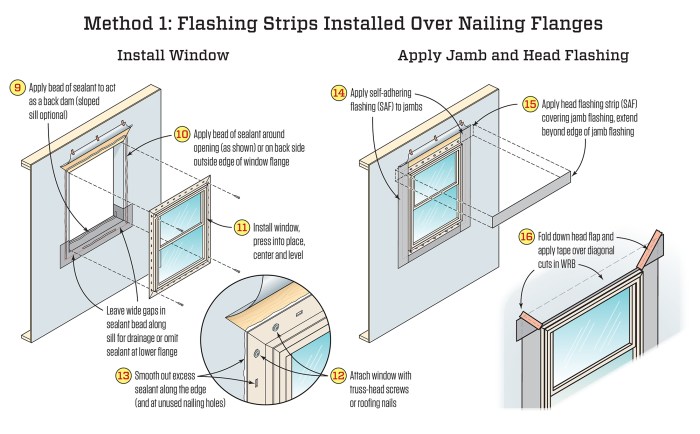
Proper sealing and caulking around windows is crucial to prevent air leaks, water infiltration, and energy loss. It helps maintain the efficiency of your windows and improves overall insulation in your home.
Guide on Properly Sealing and Caulking Windows
- Clean the surface: Before applying sealant, make sure the window frame is clean and dry to ensure proper adhesion.
- Choose the right sealant: Select a high-quality silicone or acrylic-based sealant that is suitable for the material of your window frame.
- Apply the sealant: Use a caulking gun to apply a continuous bead of sealant along the edges of the window frame, filling any gaps or cracks.
- Smooth the sealant: Use a wet finger or a caulking tool to smooth out the sealant and ensure a neat finish.
- Allow to dry: Let the sealant dry completely before painting or exposing it to moisture.
Tips on Choosing the Right Sealant
- For wooden frames: Use a paintable silicone sealant that is flexible and provides a good seal against moisture.
- For metal frames: Opt for a silicone sealant with excellent adhesion to metal surfaces to prevent corrosion.
- For vinyl frames: Choose an acrylic-based sealant that is compatible with vinyl materials for long-lasting results.
- Consider weather conditions: Select a sealant that is suitable for the climate in your area to ensure durability and performance over time.
Checking for Air Leaks
When installing new windows, it is crucial to check for air leaks to ensure proper insulation and energy efficiency in your home. Air leaks can lead to drafts, moisture issues, and increased energy bills, making it essential to address them promptly.
How to Check for Air Leaks
- Use a candle or an incense stick near the window frames on a windy day to detect air movement.
- Inspect the window frames for gaps, cracks, or visible light coming through.
- Consider hiring a professional to conduct a blower door test for a more thorough assessment.
Potential Problems Associated with Air Leaks
- Decreased energy efficiency leading to higher heating and cooling costs.
- Increased moisture infiltration, which can lead to mold and mildew growth.
- Uncomfortable drafts and temperature fluctuations in your home.
Tips for Sealing Air Leaks
- Apply weatherstripping or caulking around the window frames to seal any gaps or cracks.
- Install foam gaskets behind the electrical outlets and switch plates on exterior walls.
- Consider adding storm windows or using window treatments to provide an extra barrier against drafts.
Testing and Adjusting
When it comes to installing new windows, testing and adjusting are crucial steps to ensure proper functionality and efficiency. By testing the windows after installation, you can identify any issues or defects that need to be addressed. Adjusting the windows correctly will not only improve their operation but also enhance their longevity.
Importance of Testing
- After installing new windows, it is essential to test them to ensure they open, close, and lock smoothly.
- Testing the windows helps in detecting any gaps or alignment issues that may lead to air leaks or water infiltration.
- Proper testing can also reveal any structural issues or defects that need to be addressed before they escalate.
Adjusting for Smooth Operation
- Check the alignment of the windows and make adjustments as needed to ensure they open and close properly.
- If the windows are sticking or not closing securely, adjust the hinges or tracks to improve their operation.
- Ensure that the locks and latches are functioning correctly and adjust them if necessary for a tight seal.
Troubleshooting Common Issues
- If you notice drafts or air leaks around the windows after installation, check the seals and caulking for any gaps or damage.
- In case of condensation build-up between window panes, it could indicate a broken seal that needs to be replaced.
- If the windows are difficult to open or close, lubricate the moving parts and hinges to improve their functionality.
Hiring Professional Help
When it comes to installing new windows, there are instances where it is best to leave the job to the professionals. Hiring experts for window installation can save you time, ensure proper installation, and provide peace of mind knowing that the job is done correctly.
When to Hire Professionals
- Complex Window Designs: If you have intricate window designs or special features, it's best to hire professionals who have experience with such installations.
- High Windows or Difficult Access: For windows in hard-to-reach areas or at great heights, professionals have the necessary equipment and expertise to handle the installation safely.
- Limited Time or Experience: If you lack the time, skills, or confidence to install windows yourself, hiring professionals can ensure a smooth and efficient installation process.
Benefits of Hiring Experts
- Professional Expertise: Window installation professionals have the knowledge and experience to tackle any challenges that may arise during the installation process.
- Quality Workmanship: Professionals can ensure that your windows are installed correctly, reducing the risk of leaks, drafts, and other issues.
- Warranty Coverage: Many professional window installation services offer warranties on their work, providing added protection and peace of mind for homeowners.
Tips for Finding Reputable Services
- Ask for Recommendations: Seek recommendations from friends, family, or neighbors who have recently had windows installed by professionals.
- Check Credentials: Verify that the window installation service is licensed, insured, and has a good reputation in the industry.
- Get Multiple Quotes: Compare quotes from different window installation services to ensure you are getting a fair price for the work.
Conclusive Thoughts
In conclusion, mastering the art of window installation involves steering clear of these 10 common mistakes. By prioritizing proper measurements, choosing the right materials, and focusing on insulation and sealing, you can elevate the functionality and aesthetics of your space.
Remember, a well-installed window not only enhances your home's appeal but also contributes to energy efficiency and comfort.
Answers to Common Questions
What are the consequences of improper window installation?
Improper installation can lead to air leaks, poor insulation, and even structural damage over time. It's crucial to get it right from the start.
How do I choose the right type of windows for my space?
Consider factors like material, style, energy efficiency, and size to ensure the windows complement your space both aesthetically and functionally.
Why is proper insulation important for new windows?
Proper insulation helps in maintaining energy efficiency by preventing heat loss or gain, ultimately reducing energy costs.
When should I hire professionals for window installation?
If you lack experience or encounter challenges, it's advisable to seek professional help to ensure the job is done correctly and efficiently.
